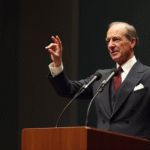Personal Experience and the Importance of Mental Health in Leadership
I couldn’t hold back the tears. Although I didn’t feel particularly bad before, certain words triggered a mix of emotions that I couldn’t suppress despite deep breaths. This was my first team-leading meeting after taking charge of a 30-person team.
These situations were external to work, but my mind couldn’t reach a state of “severance” to avoid it. There I was, unprepared for such an occurrence.
The power of the mind led to conflicting thoughts in my head faster than the tears began to flow. I experienced a wide range of emotions, from anxiety to shame, and there was no turning back.
I quickly regained composure, and the meeting continued. However, one phrase stuck in my mind all morning: “I need to seek help.”
Global Workplace Mental Health Statistics and the Impact on Leaders
This week marks World Mental Health Day (October 10), established by the UN in 1992 to raise awareness about mental health issues, including those in the workplace.
While we often discuss mental health impacts on the work environment generally, it’s crucial to examine the reality faced by individuals in any leadership position within organizations.
The truth is that the mental health of team leaders is in crisis. Gallup’s Global Workplace Report 2025 reveals that middle management has experienced the most significant decline in personal well-being over the short term.
- Globally, only 37% of leaders now consider their lives “prosperous,” down from 40% last year.
- This decline contrasts sharply with overall employees, whose life evaluations slightly improved during the same period.
The deterioration is particularly severe among critical leadership subgroups:
- Leaders aged 35 or older saw a five-percentage-point drop.
- Women in leadership positions experienced the most significant decline, with seven percentage points less.
Stress levels are evident in daily emotion metrics, where managers consistently report higher daily stress (42%) compared to general employees (39%). The report attributes this phenomenon to the pressure of balancing new executive demands and employee expectations.
The cost of this decline is high, as the drop in engagement among those in positions of authority (from 30% to 27%) was the primary cause of the overall global labor engagement decline.
The evidence is clear: leaders are exhausted, yet they’re expected to maintain composure and deliver results. However, an organization’s well-being cannot be built on the emotional fatigue of those leading it.
Reflecting on those tears, I now understand they were a turning point—a reminder that mental well-being requires a comprehensive action plan involving both myself and those around me.
Support Systems for Leaders: A Necessary Investment
Companies must also consider the mental health of those in leadership roles, providing safe spaces, training, and support networks to help them when pressures exceed the workplace.
This isn’t a waste of time; it’s part of collective strength and business outcomes.
Key Questions and Answers
- What is the current state of mental health among team leaders? The mental health of team leaders is in crisis, with middle management experiencing the most significant decline in personal well-being.
- Why are leaders more affected than other employees? Leaders face increased stress from balancing new executive demands and employee expectations.
- What are the consequences of this mental health decline? The drop in engagement among leaders has led to a decrease in global labor engagement, resulting in decreased performance, increased absenteeism, and employee turnover.
- How can companies support their leaders’ mental health? Companies should provide safe spaces, training, and support networks to help leaders cope with excessive pressures.






